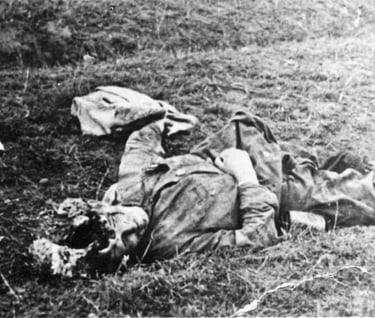Silent Killers


The Stoneman Murders
By: Mikh | 23/07/2025
The Stoneman Murders: A Tale of Fear and Mystery in Indian Cities
Introduction
Throughout history, societies have been haunted not only by the crimes of greed, revenge, or jealousy but also by inexplicable killings that leave behind no clear motive—only terror and unanswered questions. One such chilling case is the Stoneman murders that occurred in India during the 1980s and early 1990s. The “Stoneman” was the name given to a mysterious killer who targeted the homeless, crushing their skulls with heavy stones while they slept. Despite extensive investigations, the perpetrator was never caught, and the case remains one of the most disturbing unsolved crime sprees in India’s history.
The Beginning of the Murders in Mumbai
The saga began in Mumbai (then Bombay) in 1985, when reports emerged of a series of gruesome killings of homeless people. The victims were typically beggars, rag pickers, or those who slept on the streets at night—people who lived on the margins of society, whose deaths did not attract immediate attention.
The killer’s method was horrifyingly simple yet effective. Each victim was found with their head smashed by a heavy stone or concrete block, sometimes weighing more than 30 kilograms. The attacks occurred late at night, and the stones were often found abandoned near the body, smeared with blood.
Over six months in 1985, at least 12 to 13 victims were murdered in this fashion across different parts of Mumbai. Fear gripped the city, especially among the city’s homeless population. The press soon dubbed the mysterious attacker “The Stoneman.”
The Shift to Calcutta
Strangely, after 1985, the killings in Mumbai abruptly stopped. But in 1989, the nightmare resurfaced in Calcutta (now Kolkata), with almost identical patterns. Once again, homeless men were found bludgeoned to death in the middle of the night with large stones.
Between 1989 and 1990, at least 13 to 15 murders were attributed to the Stoneman in Calcutta. The victims were all street dwellers, rickshaw pullers, and the destitute. The killings sent shockwaves across the city, and police patrols increased at night. Yet, the killer remained elusive, vanishing into the night after each strike.
The Investigation and Theories
The police were baffled. There were no eyewitnesses, no clear motive, and no suspects who could be definitively linked to the crimes. Several theories began circulating:
1. A Serial Killer – Many criminologists believed the murders were the work of a single serial killer who either traveled between cities or moved after feeling the heat of investigations.
2. Multiple Copycats – Another theory was that the crimes were not committed by the same person. Instead, the notoriety of the Mumbai murders inspired a different individual in Calcutta to replicate them.
3. A Maniac Targeting the Homeless – Psychologists suggested that the killer may have harbored deep hatred against the homeless or saw them as “easy prey,” given their vulnerability.
Despite hundreds of arrests and interrogations, no one was ever convicted. The killings eventually stopped as mysteriously as they had begun.
Impact on Society
The Stoneman murders struck fear deep into the hearts of India’s urban poor. Homeless communities in Mumbai and Calcutta, already struggling for survival, now had to contend with the possibility of being murdered in their sleep. Many began sleeping in groups, while others avoided sleeping on the streets altogether.
For the general public, the case was a reminder of how vulnerable society’s most marginalized members are, and how crimes against them often go unnoticed until the numbers become too large to ignore.
The case also exposed the limitations of law enforcement in India at the time. Without modern forensic tools, CCTV, or databases, the police struggled to track a faceless killer who left no evidence behind.
Cultural Legacy
The Stoneman murders left such a lasting impression on India that they even inspired films and popular culture. In 2009, the Bollywood film “The Stoneman Murders” was released, dramatizing the events in Mumbai. While fictionalized, it captured the fear and tension of the era.
To this day, the case remains unsolved, and the true identity of the Stoneman—whether one man, several individuals, or even an urban legend—remains shrouded in mystery.
Conclusion
The story of the Stoneman murders is not just a tale of crime; it is a chilling reminder of how societies often fail to protect their most vulnerable. The faceless killer targeted those who had no families to seek justice for them, no shelters to keep them safe, and no voices to demand accountability. The lack of motive makes the crimes all the more unsettling, classifying the Stoneman among the most bizarre and terrifying criminals in modern history.
Even decades later, the mystery endures. The Stoneman remains a ghost in India’s criminal history—a silent predator who struck without warning, leaving behind nothing but shattered skulls, unanswered questions, and a city’s haunting memories.
Coming Soon
We're on a mission .......................

Discover our full library of The Theos e-magazines and articles — all completely free to read.
We are a crowdfunded publication, dedicated to sharing knowledge, reflection, and theology with readers around the world.
Your support and donations help us continue offering open, accessible content for everyone, everywhere.
Join us in keeping wisdom free.
@ the theos since 2023 © 2023. All rights reserved.